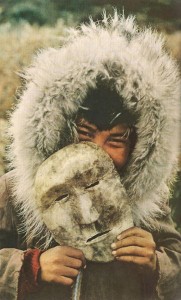Dear Integral Meditators,
If you are interested in going a bit deeper into your animal and instinctive self, then do check out the Shadow Self workshop on Sunday the 30th November!
Yours in the spirit of the journey,
Toby
Upcoming Courses at Integral Meditation Asia in November/December:
The Meditation for Creating a Mind of Ease Online Course
Tuesday 25th November, 7.30-9pm – Evening event – Integral Mindfulness –Co-creating Professional Success and Personal Wellbeing within Organizations and Leaders
Sun 30th Nov, 9.30am-12.30pm – Living Life From Your Inner Center – Meditations for Going With the Flow of the Present Moment
Sun 30th Nov, 2pm-5pm – Finding Freedom From What Holds You Back in Life: Practical Meditations And Techniques For Working With your Shadow-Self – A Three Hour Workshop
Sunday December 7th, 9.30am-12.30pm – Meditations for Activating, Healing and Awakening our Ancestral Karma
Sunday December 14th, 9.30am-12.30pm – An Introduction to Meditation From the Perspective of Zen
 Mindfully Integrating the Animal and Instinctive Self
Mindfully Integrating the Animal and Instinctive Self
Your animal and instinctive self is raw vitality. It is the wild and feral part of yourself that has been around for millions of years on the planet, it is entirely at home in the body, with sexual instinct, with fighting, with doing what is necessary to survive in a tough and uncompromising world. It is also a part of you that has a natural dignity, an unconscious affinity with the whole, that feels entirely at home in a body, on the earth, participating in life.
Obviously we need to exert a certain benevolent control over our animal self, but for many of us the animal and instinctive self has become an enemy, a source of terror, of embarrassment, of shame. We often try and lock our animal self in the cellar of our mind, pretend (and hope) that if we ignore it or pretend it is not there for long enough it will go away and leave us in peace.
There comes a time for all of us where it becomes necessary to make friends with our animal self, to learn to make positive use of our instincts, to stop repressing our passions and instead start consciously and heartily expressing them in our life in positive and authentic ways.
The conscious integration of the rational and self with the animal and instinctive self gives the soul within us all the tools and power it needs to start making a difference in the world and manifest its desires. Without the vital dynamism of the animal self the civilized self becomes a ghost, a cardboard cut out, a shell. It’s very difficult for the soul to do something with a shell!
If you are suffering from an absence of vitality, a lack of confidence, a sense of inner conflict, connecting and communing with your animal and instinctive self is definitely a good area within yourself to investigate!
Questions for becoming more aware of and reclaiming our instinctive and mindful self:
Where is my vitality?
What is my animal self asking of me?
What might it mean to make positive use of my instincts?
How can I make friends with my animal self?
How can I put my animal and instinctive self to positive use?
Good until Nov 30, 2014








